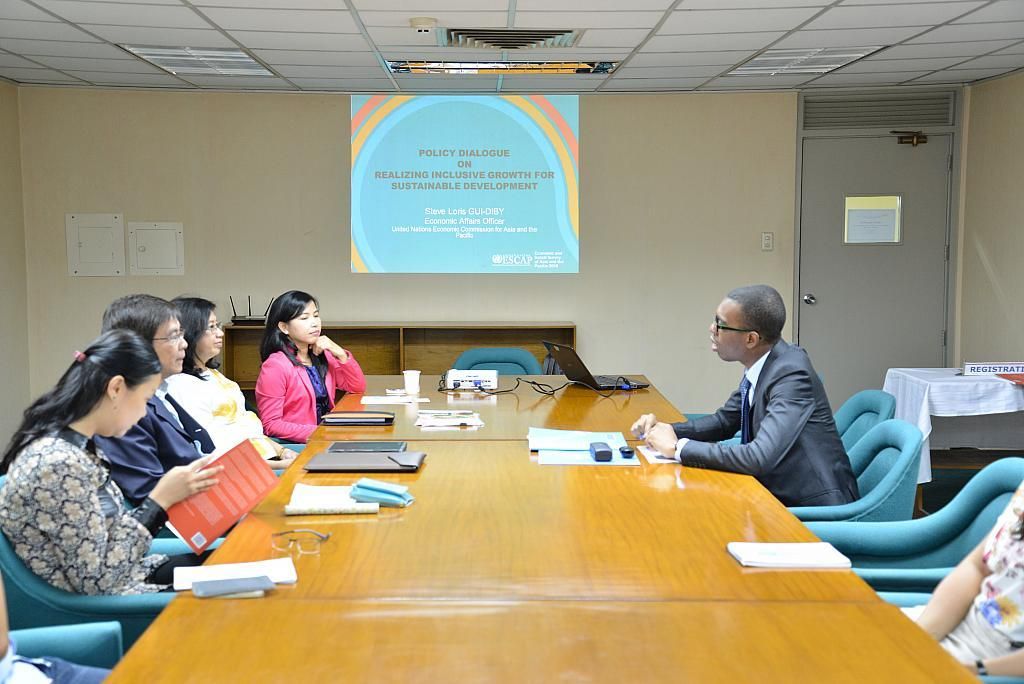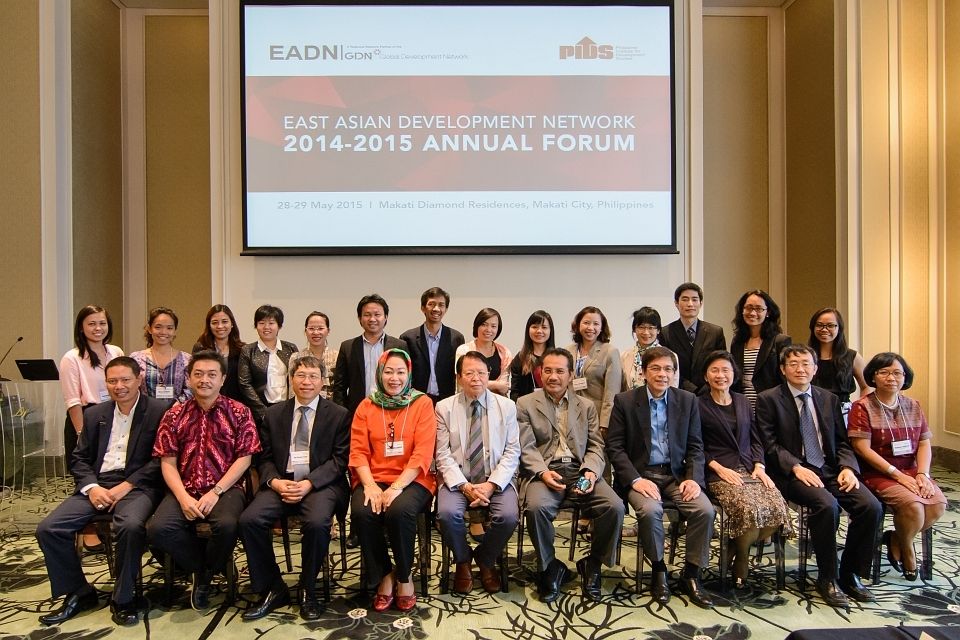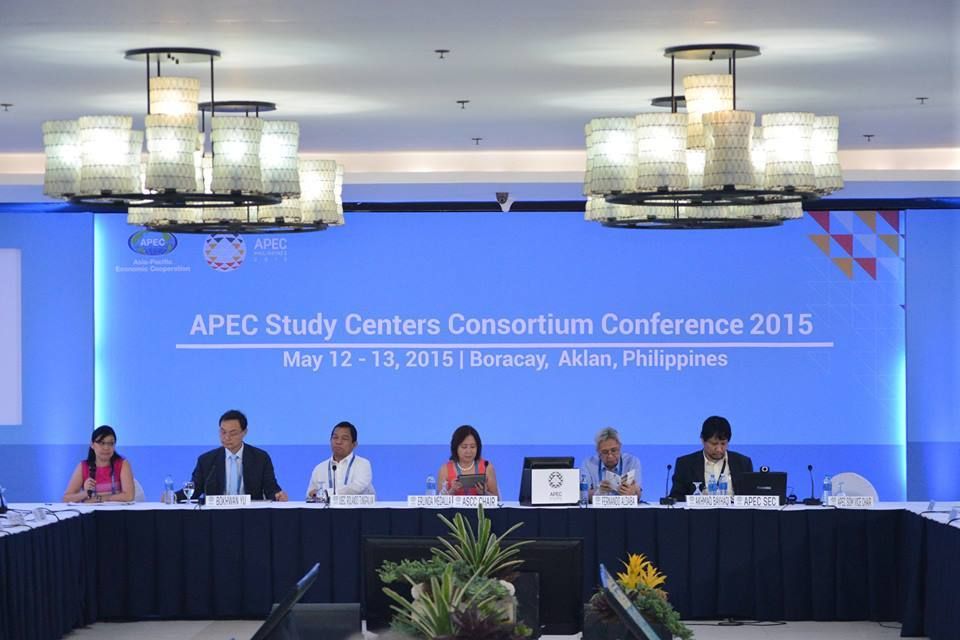Having trouble reading this email? View it in your browser. Not interested anymore? Unsubscribe Instantly. |
||||
 |
||||
| Thursday
/ 9 JULY 2015 |
||||
The study measures SUCs’ performance using the results of 36 professional board exams (PBEs) as an indicator of the quality of instruction. Overall, the numbers reflect very low averages for SUCs. “The weighted passing rate of all SUCs combined in all the PBEs taken together is 4 to 9 percent lower than the national passing rate in 2004-2011,” reveals the study. Only 9 out of the 36 PBEs had average passing rates above 60 percent and only 3 had passing rates above 70 percent. The SUCs’ performance in PBEs dropped in 12 course programs, namely, accountancy, aeronautical engineering, civil engineering, criminology, electrical engineering, electronics engineering, library science, mechanical engineering, medical technology, physical therapy, social work, and veterinary medicine. The authors add, “More worrisome is the preponderance of SUCs and private higher education institutions (PHEIs) with zero passing rate in many PBEs in 2004-2011.” In short, SUCs are not meeting the expectations that come with increased budget allocation for their institutions. They are not producing qualified people in the courses they offer. Manasan and Parel surmise that the root of the problem comes down to the collective management issues of the CHED and the SUCs, particularly where duplication of programs distract a big number of SUCs from carrying out their core mandates efficiently. SUCs per region all have core mandates that indicate the programs that each college and each university specialize in. Program duplications occur when SUCs start offering programs that are not unique to them, not their competitive advantage, and are outside of their core mandate. This becomes problematic for a number of reasons. Firstly, the increase in duplicate programs also increases the per student cost of SUCs. Secondly, given the cheaper tuition fees in SUCs, the latter siphon enrollment numbers from PHEIs that traditionally offer similar programs. Well and good if cheaper signifies quality, but as Manasan and Parel found out, it does not. Thirdly, while SUCs’ lower tuition fees evidently fail to reflect quality, it also says a lot about the quality of CHED’s regulation and monitoring of SUC activities. Many PHEI officials are concerned about the uneven playing field where SUCs are given more leeway in offering new programs even if they do not have the required facilities and qualified faculty. There is also a standing confusion about the level of autonomy that SUCs have in modifying their charters and the CHED’s role in making sure that SUCs follow the guidelines. Other factors contribute to perpetuating these scenarios, such as SUCs being forced to open programs due to the demands of their communities, local politicians, and other stakeholders. Another factor once again considers the problems with management. Increases in the number of enrollees boost subsidized funding. This becomes expedient for SUCs to generate more income by acquiring more enrollees by offering popular programs. What the study makes clear at the end is the utmost importance of rationalizing the programs offered by SUCs and improving the quality of instruction. Improving the performance in PBEs cannot be achieved solely by offering exam reviews at the end of term, but by investing in the quality of instruction and faculty development to ensure high-quality teaching personnel that can help develop a globally competitive workforce. This way, the Philippines would be poised to take advantage of opportunities under the ASEAN Economic Community’s mutual recognition arrangements. CHED is undertaking measures to address the problems of program duplications and SUCs’ departure from their core mandates. Some of the recommendations Manasan and Parel indicated in their study include encouraging SUCs to comply with CHED policies, standards, and guidelines, and reforming the funding formula to ensure that no additional subsidies will arise from additional enrollment resulting from SUCs expanding into the territories of popular programs. Download a copy of this study under the PIDS Research Paper Series 2015. Want more? Know what other PIDS studies have to say about higher education in the Philippines. For other related studies, visit the SocioEconomic Research Portal for the Philippines. Simply type “higher education” and other relevant keywords in the Search box.
|
16 JULY 2015 17 JUNE 2015 . . . . . . . . . . . . . . . . . . . . . . . . . .
NETWORK OF EAST ASIAN THINK-TANKS
Officially recognized at the “10+3" summit meeting, the Network of East Asian Think-tanks (NEAT) is a mechanism for research and academic exchange, and a platform for the second-track diplomacy in the regional cooperation among “10+3" countries in East Asia. It aims at integrating the research resources in East Asia, promoting the academic exchanges, and providing intellectual support for East Asian cooperation. By establishing a network among East Asian think-tanks, governments, and enterprises and promoting the interaction of these three circles, it intends to study the key issues related to East Asian cooperation, work out strategic ideas and concrete policy suggestions for the regional integration, and submit research reports to the “10+3" summit meeting. The PIDS, together with the Institute of Strategic and Development Studies and the Asian Center of the University of the Philippines, represents the Philippines in this network. . . . . . . . . . . . . . . . . . . . . . . . . . . Call for Papers: Philippine Journal of Development
The Philippine Institute for Development Studies (PIDS) is inviting submissions to the Philippine Journal of Development (PJD). The PJD is a peer‐reviewed journal published twice a year by PIDS. Now on its 40th year, PJD considers original, unpublished papers on economic development, political economy, public administration, foreign relations, and other fields/topics, which are policy oriented and may or may not explicitly have a bearing on the Philippines. Book reviews are also accepted. The theme or topic of the book should fall within the scope of the articles accepted for publication. The target readers of PJD include researchers, educators, policymakers, and development planners. Click here for the guidelines in the preparation of articles. Inquiries and submissions should be forwarded to the Managing Editor at ssiar@mail.pids.gov.ph.
|
|||
PHILIPPINE JOURNAL OF DEVELOPMENT
POLICY NOTES
DEVELOPMENT RESEARCH NEWS
DISCUSSION PAPERS
|
||||
|
||||
The Philippines' financial sector has a lot of catching to do to improve its competitiveness and be at par with the frontrunners of the Association of Southeast Asian Nations (ASEAN). Improved financial education and financial literacy, and reform policies to strengthen financial inclusion of small and medium enterprises (SMEs) should be at the heart of policy reforms to achieve the critical improvements necessary to gear up for the ASEAN Economic Community. These were expressed by former PIDS president, Dr. Mario B. Lamberte, and his research associate, Ms. Ammielou Q. Gaduena, in their report on the country’s financial system titled "Enhancing Access to Financial Services through a More Competitive Financial System", a component study of the Advancing Philippine Competitiveness (COMPETE) project funded by the United States Agency for International Development. The authors presented the study in a PIDS Pulong Saliksikan held on June 17 in Makati City. READ MORE |
||||
Social enterprises can help enhance the role of small and medium enterprises (SME) in sustainable economic development, claims a recent study released by the Philippine Institute for Development Studies. Written by PIDS consultant Leonardo A. Lanzona, Jr. of the Ateneo de Manila University, “Enterprises and Employment: Mainstreaming SMEs and Employment Creation” explores the theory and recommends policies to empower both areas of enterprise. While there is strong belief on the ability of SMEs to sustain economic growth, Lanzona demonstrates the problem in focusing the breadth of policymaking on the three main arguments for SME empowerment: that they enhance competition and entrepreneurship; that their productivity is potentially bigger than large firms but is often held back by financial markets and institutional failures; and that their ability to increase employment and alleviate poverty is greater than that of larger firms. READ MORE |
||||
State think tank Philippine Institute for Development Studies (PIDS) hosted a policy dialogue for the United Nations Economic and Social Commission for Asia and the Pacific (UNESCAP) last May 18. The resource speaker was UNESCAP Economic Affairs Officer Steve Loris Gui-Diby who expounded on the role of measuring growth inclusiveness to determine the best policies for achieving sustainable development. UNESCAP had recently developed a new inclusiveness index. The index ranks a country’s level of inclusive growth over a long period of time, and incorporates the social, environmental, and economic components of a country’s performance into its criteria. READ MORE |
||||
The East Asian Development Network (EADN) held its annual forum on May 28 and 29, giving the podium to its young research grantees to elaborate on the progress of their individual work. Since 1998, the network has sought to develop the research capacity of participating institutions and individuals by providing the resources to carry out development-focused and policy-relevant research. The Philippines, on its fifth year as EADN Secretariat, welcomed research grantees and mentors from all over Asia, including Indonesia, Thailand, China, and Malaysia. The focus of the research studies at the EADN forum this year spanned diverse development issues, among them agriculture, migration, human capital formation, and finance. This diversity, according to the welcome remarks of Philippine Institute for Development Studies (PIDS) President and EADN Chairman and Regional Coordinator Dr. Gilberto Llanto, proves that there is still much to be explored in the field of development. READ MORE |
||||
The Philippines took 95th place on the World Bank rankings for Ease of Doing Business, gaining the second highest leap in the charts for the 2015 report. But it is still not enough to beat neighbors Thailand (26th), Viet Nam (78th), and Malaysia (18th). A new policy note released by state think tank Philippine Institute for Development (PIDS) reviews the elements of a good business environment, and what an increase in ease of doing business (EoDB) can bring to the table for APEC and its member-states. Commissioned by the Philippine APEC Study Center Network in anticipation of the Asia-Pacific Economic Cooperation Summit 2015, the policy note, written by PIDS consultants Ronald Mendoza, Tristan Canare, and Alvin Ang, provides a comprehensive review of literature on EoDB and an evaluation of the performance of APEC economies in creating a good business environment as individual member-states and as a region. READ MORE |
||||
"Out-of-school children prevalence has declined in almost all regions of the country," claims a joint study of state think tank Philippine Institute for Development Studies (PIDS) and the United Nations Children's Fund (UNICEF). The numbers are indicative of achievements and further challenges for basic education as a whole. PIDS Senior Fellow Jose Ramon Albert and Assistant Professor Clarissa David of the University of the Philippines-Diliman College of Mass Communication delivered their collaborative report at the PIDS-UNICEF joint seminar last May 26. The results of the country report are summarized in a policy note released recently by PIDS titled "How Has Basic Education in the Philippines Fared and What else Needs to Be Done?" READ MORE |
||||
|
||||
Gross Domestic Product
Source: Philippine Statistics Authority VIEW TABLE for time-series data on gross national product and gross national income. |
||||
Headline Inflation
According to the Philippine Statistics Authority (PSA), the downtrend was mainly due to indices of housing, water, electricity, gas and other fuels, and communication. Lower annual increments in the indices of food and non-alcoholic beverages; alcoholic beverages and tobacco; clothing and footwear; and furnishing, household equipment, and routine maintenance of the house also contributed. Likewise, core inflation rate went down to 2.2 percent in May, from 2.5 percent in April. Source: Philippine Statistics Authority - National Statistics Office VIEW TABLE for time-series data on year-on-year inflation rate. |
||||
Philippine Stock Exchange Index
Source: Philippine Stock Exchange VIEW TABLE for time-series data on Philippine Stock Exchange Index. |
||||
|
||||
Need Help? Have Feedback? Feel free to Contact Us. © 2015 Philippine Institute for Development Studies.
|
||||
 As another school year opens, hundreds of thousands of students will continue their tertiary education in the 2,299 higher education institutions (HEIs) across the country. A fourth of these HEIs make up the 547 state universities and colleges (SUCs) subsidized by the national government. In 2012, the Commission on Higher Education (CHED) allocated PHP 26 billion to support SUCs, aligned with the country’s commitment to promoting human capital development and improving the country’s economic competitiveness. But how well have SUCs contributed to realizing that commitment? The situation revealed by PIDS Senior Research Fellow Rosario Manasan and Supervising Research Specialist Danileen Parel in their study, “Review and Assessment of Programs Offered by State Universities and Colleges”, uncovers a dismal performance that puts to question the cost and the efficiency of SUC management relative to the quality of education they actually provide.
As another school year opens, hundreds of thousands of students will continue their tertiary education in the 2,299 higher education institutions (HEIs) across the country. A fourth of these HEIs make up the 547 state universities and colleges (SUCs) subsidized by the national government. In 2012, the Commission on Higher Education (CHED) allocated PHP 26 billion to support SUCs, aligned with the country’s commitment to promoting human capital development and improving the country’s economic competitiveness. But how well have SUCs contributed to realizing that commitment? The situation revealed by PIDS Senior Research Fellow Rosario Manasan and Supervising Research Specialist Danileen Parel in their study, “Review and Assessment of Programs Offered by State Universities and Colleges”, uncovers a dismal performance that puts to question the cost and the efficiency of SUC management relative to the quality of education they actually provide. 







 The country's year-on-year headline inflation rate went down further to 1.6 percent in May, from 2.2 percent in April. Interestingly, this has been the lowest inflation rate registered since 2000.
The country's year-on-year headline inflation rate went down further to 1.6 percent in May, from 2.2 percent in April. Interestingly, this has been the lowest inflation rate registered since 2000.  The Philippine Stock Exchange Index (PSEi) ended at 7,580.46 for the month of May. This is lower compared to last April's 7,714.82.
The Philippine Stock Exchange Index (PSEi) ended at 7,580.46 for the month of May. This is lower compared to last April's 7,714.82.

